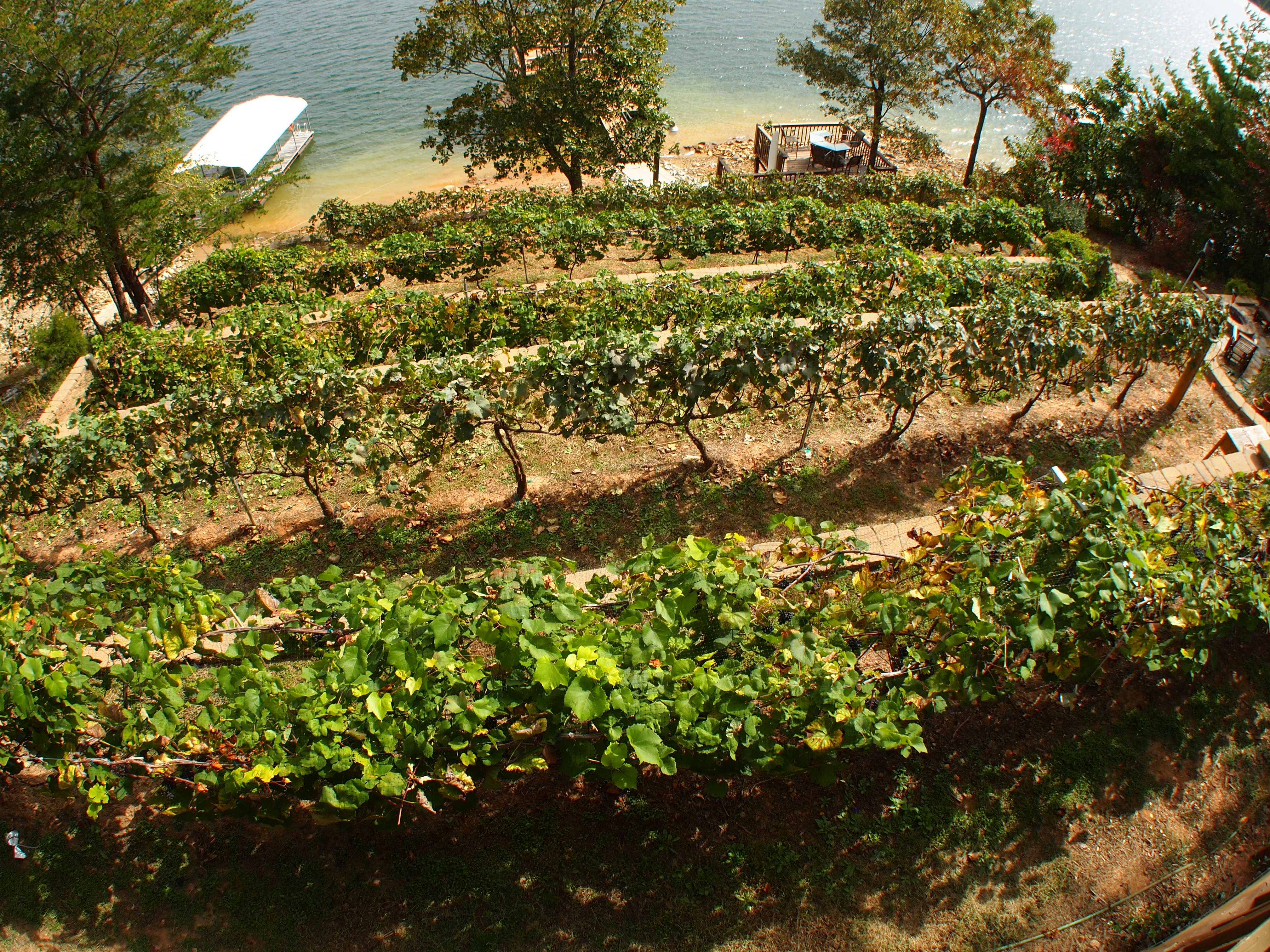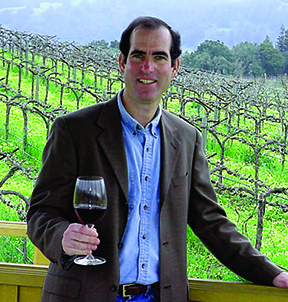Editor’s Note: This is the first installment of a year-long series of the life of a homemade wine, from homegrown grapes in New York State.

For the home winemaker who has taken the hobby to the next level and planted a home vineyard, my hat is off to you. A home vineyard can transform what can be a seasonal hobby, to one that is year- round. In the year of a homemade wine, before you ever step foot in the winery, the first step is shepherding your home vineyard to produce the highest quality grapes. This is no simple task, and it is the main reason why there are mediocre vintages as well as outstanding, memorable ones. In most books that discuss the development of a wine, homemade or commercial, it is emphasized that wine is made in the vineyard. The quality of the grape dictates the quality of the wine. Sure, a skilled winemaker can take a not-so-great grape and, with substantial efforts, turn it into a palatable wine. On the other hand, give a skilled winemaker an outstanding grape and you have provided him or her with the materials to create a masterpiece. In this first installment of “A Year in the Life of a Wine,” we’ll start as the experts say to do: In the vineyard. This is the time of year when the grapes come in from the vineyard into the winery —harvest!
Checking the grapes
At this point in the year, all the black/red grapes are now fully colored in the vineyard. The white grapes have turned from light green to a beautiful golden yellow. These are all good visual signs that the fruit is maturing and ripening. It is now time to start a regular sampling and testing regimen in the vineyard. With vintage labeled quart size sealable plastic bags in hand, I walk down each vineyard row and try to take representative samples of the grapes. This includes taking grapes off the center of multiple random bunches from multiple vines in each row. I always try to take from the center of a cluster as they should provide more of an average maturity of the grapes in the overall cluster. I also taste a few grapes during this process; noting flavors, seed color and brittleness. I take enough of each variety to fill about one third of each bag. Once I have all my samples collected I head inside to my mini wine lab.
My mini-lab is set up in my garage next to all of my grape processing equipment and primary fermentation tankage. A pure garagiste! It isn’t elaborate, but it is functional. I have digital Brix and pH meters, which provide reliable and repeatable data — key in making harvest decisions. I also use a colorimetric kit in determining total acidity levels. Each sample gets a good squash in the bag to release as much juice as possible. I then measure and note the Brix, pH, and total acidity of each sample. This same process is repeated weekly.
So what am I looking for? Sugar levels and pH should be increasing while acidity is dropping. The progress of these changes have much to do with what Mother Nature sends our way during those all important weeks of maturation. Will it be warm, dry, and sunny to help the grapes move towards optimum maturity or will it be cool, rainy, and overcast, slowing its progress? Or even worse, will we get an early frost that will stop maturation in its tracks? No one knows this but Mother Nature. She will control the destiny of this year’s vintage.
All this data is very helpful in giving you a trend toward maturity and helping provide some insight to when you are getting close to harvest. To be honest, however, nothing takes the place of your own palate and indicative observations. Again, while I’m picking some grapes for the quantitative evaluation, I’m also tasting grapes and looking at seed color and giving those a chew for my qualitative evaluation. After a few years of tasting your own grapes, you get a good feel of if you are getting close to the all-important harvest. You taste sweetness increase, bracing acidity drop off, and the nuances of the particular variety evolve. Those seeds are also a huge help in the harvest puzzle. Unripe grape seeds are green and relatively pliable. As the grape ripens the seeds brown, and when you chew them they are hard and brittle. When this happens you have a very good indication that you are close to your destination.
Watching the weather
Another huge factor in determining harvest, as I alluded to earlier on, is what Mother Nature is sending your way this time of year. At this stage, when harvest is within a few weeks, I pay close attention to the extended weather forecast. What are the temperatures day and night? Is there a potential of a frost? Is rain coming? Will it be heavy? A potential of an inch or more? Heavy rains at this time of the season are a real concern. Heavy rains will be taken in by the grapevines and be provided to your grapes. That water will act to dilute those sugars I am so desperately hoping to see increase. It can also act to cause the berries to split and open them up to disease and a wonderful picnic for the bees. Weather concerns can cause you to pick a bit earlier than you’d like, as the consequences may be worse.
In the end the harvest decision will set, to a large degree, what this year’s vintages of your different varieties will turn out to be. It is one of the multiple “all important” decisions in “the year in a life of a homemade wine.”
When growing your own grapes, you must be cognizant of your vineyard’s limitations. What varieties are you growing? How long is your growing season? What is your terroir? Although I enjoy a nice glass of Cabernet Sauvignon or Syrah, I can’t grow these grapes successfully here in my Hudson Valley, New York vineyard. Excessively cold winters, short growing seasons, soil and location limitations would make this endeavor a recipe for disaster. So you grow what can flourish and provide you years of quality fruit and learn how to work with each variety to develop wines that you enjoy. I have found great success with hybrid grapes. My red wine grapes like Corot Noir, Noiret, De Chaunac, and Marquette have been good solid producers — each with its own flavor profile and nuances. I also grow native Concord grapes, which are vigorous and nearly trouble free. The biggest issue I have with Concord is that since the grape is so aromatic as it ripens, it is a major attractant of wasps, which are are direct competitors for that delicious fruit. My white wine all derives primarily from the hybrid Vidal Blanc. This grape is my favorite. It is a low-maintenance variety that is an annual quality producer of grapes that allows for many stylistic options in the winery.
Good to go
So when the indicative numbers and, more importantly, the grape flavors are where your gut tells you, “Good to go,” harvest has arrived! This is by far the most fulfilling event for the grape grower. After a year including dormancy, pruning, bud break, flowering, fruit set, vine balancing, veraison, leaf pull, hedging, and general vineyard maintenance, the optimum time to pick the fruit has arrived! Throughout the season, the bulk of the grape grower’s work is somewhat solitary. Except when you can get your kids and friends to help you with pulling weeds and installing bird netting. Harvest on the other hand is a time in my home vineyard where friends and family come together.
There is a sense of excitement as everyone checks in and asks “when do you need us there for harvest.” It is in essence a family holiday. One that is put on the calendar with great anticipation. This hobby brings family and friends closer. It cements a bond that carries from year to year and hopefully from generation to generation.
You need to be passionate about winemaking and have the time and resources to do it right. Home wine grape growing is a near daily effort. It can be extremely rewarding though!
Once your harvest crew has completed all the grape removal from each variety; being meticulous not to leave a single cluster behind, all the grapes are then brought from the vineyard into the winery for processing. In my case, the processing stage is taken care of in my oversized garage. This next stage in “a year in the life of a homemade wine” will be detailed in my next installment. But is that it your vineyard? Far from it. Growing grapes, like making wine, is also a year-long endeavor, so in addition to following along with the wine from this vintage, we will also keep up with the progress and maintenance of the vineyard throughout the seasons.







